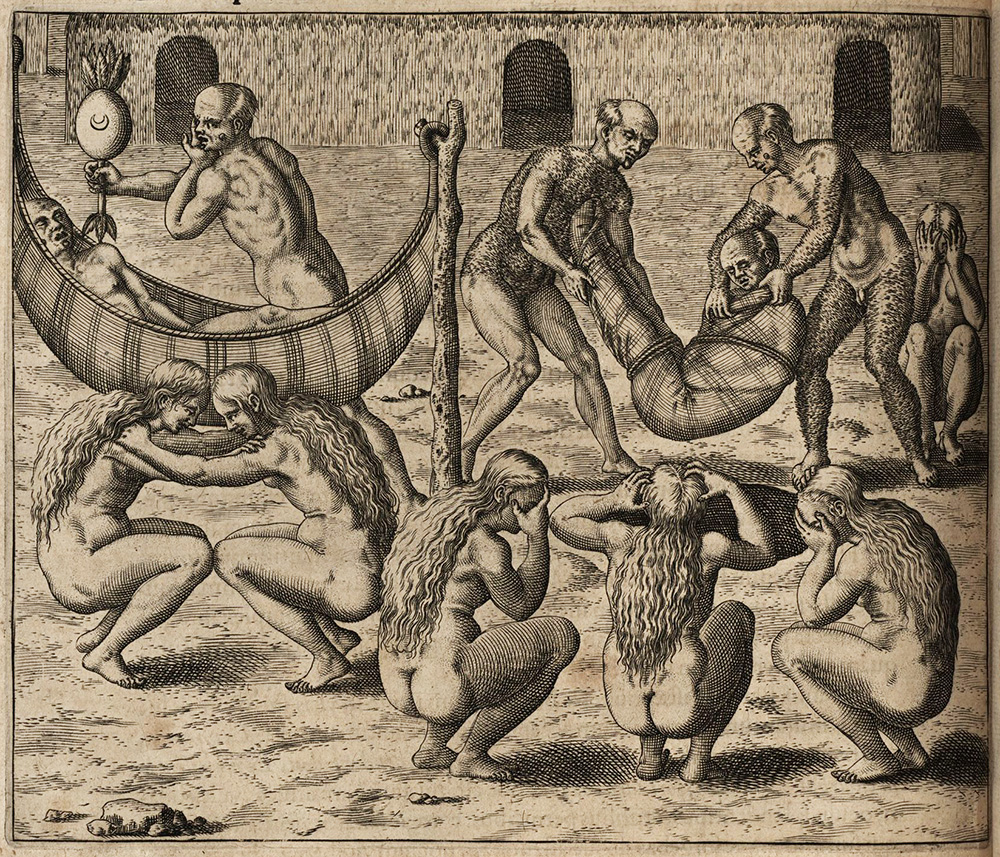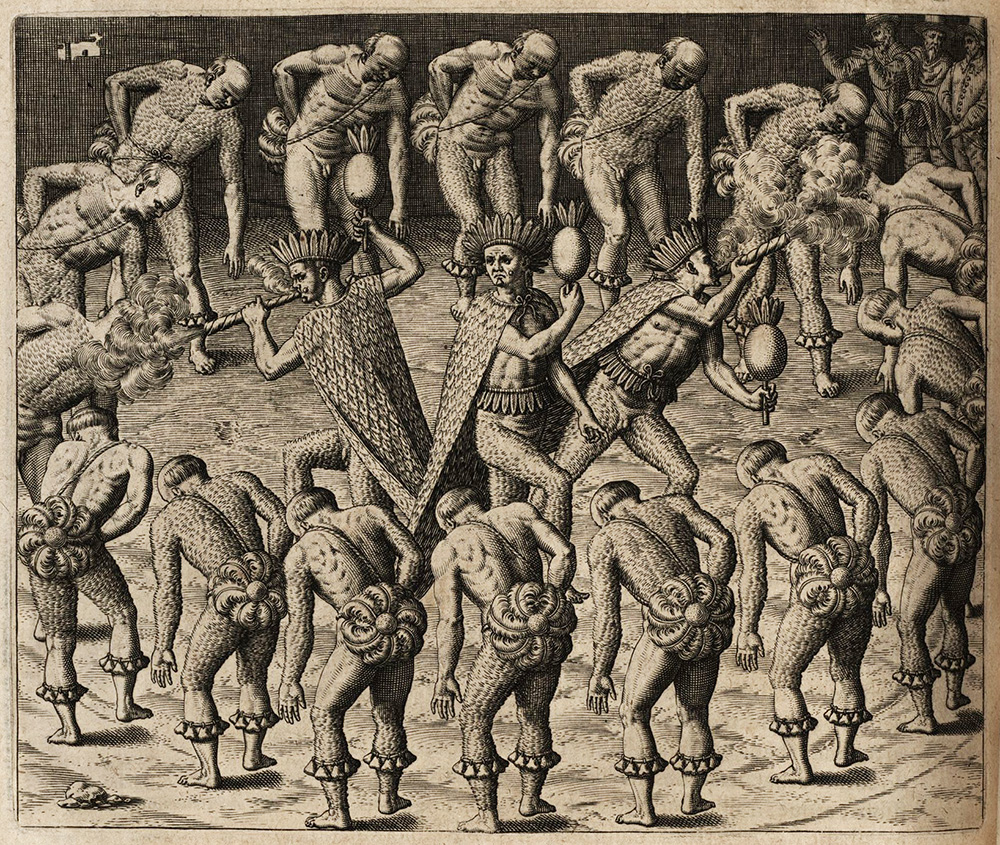When the Covid-19 pandemic reached Brazil, it soon became clear that the virus was not as democratic as some had first imagined. At the very beginning, the ones who were infected the most were the wealthy people who had the means to travel to Europe and Asia, and who actually brought the virus from abroad. However, as the weeks went on, the virus began to disproportionately affect the less privileged, those who live with their whole family in a single room and cannot isolate in case of infection. Those who don’t have access to water supply and cannot wash their hands regularly. Those who don’t have the means to stay at home for weeks, if they want to put food on their table.
Those inequalities became even more explicit when the Covid-19 reached the indigenous population of Brazil, particularly those who live in the Amazon region. Far away from the best hospitals, immunologically defenseless, and without the means to be isolated from urban centers, numbers show that the indigenous populations are suffering from the pandemic more dramatically than any other group.
As a historian of the 16th century Portuguese Empire, these events bring to mind at least two important questions. First, I wonder how does the history of previous epidemics help us to understand the origins of those social and racialized inequalities? And secondly, I ask myself what can the history of the Amerindian populations teach us about the Covid-19 crises?
The first systematic written sources about Brazilian indigenous populations were penned by Jesuit missionaries. After the papal recognition of the Society of Jesus in 1540, the order’s founder Ignatius of Loyola and his brothers established a solid alliance with the Portuguese King D. John III.
In the years that followed, the Jesuits together with Portuguese officials and merchants soon spread to all corners of the world, to places such as India, Japan, Congo and Brazil, where they would try to convert indigenous people to the Christian faith. While they grappled with the enormous cultural diversity they encountered, the Jesuits had the institutional obligation of constantly writing to Rome, so that they could justify their actions among the populations that had, until recently, been generally unknown among other Europeans.
Today, these letters are rich sources for us to think about the history of Brazilian indigenous populations. But any historian who reads these sources needs to be aware of the fact that the Jesuits missionaries projected their own prejudices and categories onto the indigenous populations they were describing. For instance, the Jesuits would frequently repeat that, since the indigenous languages did not have the letters “L”, “F” and “R”, the indigenous populations would not have any “Law”, “Faith” and “Ruler”. Moreover, the nudity of the Amerindians would cause repulsion to the Jesuit observers, to the point that they would even question if the Amerindians were truly human beings, capable of recognizing and adoring the only and true God of the Christians.
This was an important question, because during their first years among the Brazilian Amerindians, the Jesuits completely failed to convert them. The missionaries would explain the Mysteries of the Christian Faith to their indigenous audience. Soon after these explanations, the Amerindians would apparently agree with all the points made by the missionaries as if they were set on becoming good Christians. However, after some days, they would forget their catechism and return to their “gentile” customs.
To overcome what was thought to be an “inconstancy of the Indian soul”, in the 1550s the Jesuit missionaries, led by their superior Manuel da Nobrega, established a new plan to convert the indigenous populations. They had realized that visiting the natives in their own communities was fruitless. Thus, the only alternative would be to construct missionary villages, where the Jesuits would force the Amerindians to live according to European customs. These villages were known as “Reduções” (“Reductions”, in English) because their goal was to reduce the indigenous populations to the manners of Christian civilization.
São Paulo, the biggest city of Latin America, was once a Jesuit Reduction. In fact, the Jesuit’s plan to reduce the indigenous populations was quite effective. As a result, the missionaries managed to bring diverse indigenous tribes together, from all over Brazil, to live in these recently founded villages close to the sea, where the Amerindians would also work as slaves to produce sugar cane.
Once they stopped being nomads, new dangers were around the corner for the indigenous peoples. In 1563, a first wave of smallpox dramatically affected the Amerindian populations who lived in the Jesuit Reductions of Bahia, where the Portuguese had established the capital of Brazil. In their letters, the Jesuits described villages totally devastated by the disease, in which no one was left to dig the graves of those who had died last. Consequently, their remains were eaten by pigs who would then spread the infection to other villages.

It is difficult to translate these descriptions of the disease from Portuguese to English because many of the Portuguese words the Jesuits employed are not really in use anymore. I imagine it was difficult even for them, at that time, to find the correct words to describe such horrific scenes. Many sources refer to the odor of the putrescent bodies. In 1564, Jesuit Antonio Blasquez wrote: “So revolting and heinous was the reek of that illness that no one could tolerate it, so that many [Indians] would die eaten by the worms conceived in their bodies”. Burning in flames of high fever, “their flesh would putrefy so that their bones would become apparent”, wrote another missionary, Pedro da Costa, in 1565.
It so happened that Europeans settlers and Africans slaves would bring to South America viruses and bacteria against which the indigenous population had no immunological defense, such as the variola viruses that caused smallpox. To make things worse, the Amerindians were basically nomads until the arrival of the Europeans. If they had persisted being nomads, the effects of disease would probably not have been so dramatic. But forced by the Jesuits to live in the missionary Reductions, the impact of the smallpox was devastating for those who did not manage to run from these villages and keep social distance from the white men.
The demographic impact of these epidemics is difficult to calculate. Besides little exploited archeological data, the main sources for approximations are exactly these Jesuit letters, according to which the population of the Reductions declined to one quarter of its original amount in few months.
As it has already appeared in previous episodes of “Experiencing Epidemics”, it is interesting to notice how the Jesuits employed a religious discourse to understand the epidemic. Christian missionaries would blame the outbreaks on the local indigenous pagan customs. For instance, the Jesuit Leonardo do Valle wrote that the disease was caused by a shaman who claimed to be a prophet. Thus, God would have punished those who dared to believe in this false prophet, “so that their sins [were] castigated with a strange plague”.
In our current times, the Covid-19 crisis has reminded us that some aspects of this horrendous past are not gone. For example, in January 2020, a few months before the Virus reached Brazil, the president Jair Messias Bolsonaro suggested that, I quote, “the Indians are increasingly becoming human beings just like us”. It is clear that Bolsonaro echoes, perhaps unconsciously, the sentiment that was common among 16th century Jesuits, for whom the conversion of Amerindians to Catholic Faith went hand in hand with restoring their human dignity, which indigenous peoples supposedly lacked before the arrival of the Europeans.
Not by coincidence, Bolsonaro has also appointed Christian missionaries to Brazil’s National Indian Foundation (FUNAI), the governmental body whose responsibility is to protect the rights and lands of indigenous people. The federal Constitution assures the right of remote populations to live as they opted, that is to say, isolated from the rest of the country. However, these missionaries (now in charge of the Office) do not recognize this right. Their goal still is to preach the gospel to all creation.
After the outbreak of the Covid-19 pandemic, the Brazilian indigenous populations rapidly organized themselves. Already in February, they asked for federal aid to organize a sanitary isolation. Official answers were late in coming. The most isolated populations had to wait until a very late answer from the Supreme Court, which in August decided that the federal government had to adopt a series of measures to contain the Covid-19 contagion and mortality among the indigenous population. It was already too late.
To make things even worst, as we know, the new coronavirus targets above all the elderly. For the indigenous people, these elders are not disposable nor should they be relegated in retirement homes. For them, the elderly are an indispensable repository of traditional knowledge, much of which is passed by word of mouth, from generation to generation. By attacking a whole generation of indigenous elders, Covid-19 may be irreparably damaging indigenous history – just as other epidemics had already done in the past.
However, against all odds, the Amerindian populations will survive once again, as will Western civilization. But the Covid-19 pandemic has indubitably reminded us how fragile the human condition is. If we are now fearing, with some reason, that the World as we know it is coming to an end, then truly we have much to learn from the indigenous people of Brazil. Their lives have been collapsing since the 16th century, and they have already come up with effective “ideas to postpone the end of the world”.

Ailton Krenak, one of the most important indigenous leaders from Brazil, argues that it is unsustainable to imagine humankind as something apart from nature. That is to say, disconnected from the ecologies we are part of. In the 16th century, the Jesuit Reductions, as symbols of early modern globalization, brought dramatic ecological consequences to the indigenous populations of Brazil. We could have expected that our limitless globalization, which aims at reducing the World into a sort of a single global village, would have brought us the same sort of ecological impacts that have affected Amerindians for centuries.
In other words, maybe the Covid-19 crisis can teach us that we are indeed responsible for the World we are part of – something the Amerindian populations have been trying to tell us for a very long time.
Contributor
Tomás Tassinari is a doctoral researcher in the Department of History and Civilization at the European University Institute. He is a historian of West Central African, and his research focuses on the early colonization of Congo and Angola, during the 16th and 17th centuries, particularly regarding the Jesuit activities in the region. Before coming to the European University Institute, Tomás completed his Undergraduate and Master’s degrees at the University of São Paulo.
Further Readings
Alden, Dauril and Joseph Calder Miller, “Out of Africa: The Slave Trade and the Transmission of Smallpox to Brazil, 1560-1831,” Journal of Interdisciplinary History 18 (1987): 195–224.
Castelnau-L’Estoile, Charlotte de, Les ouvriers d’une vigne stérile: les jésuites et la conversion des indiens au Brésil 1580-1620 (Paris: Centre culturel calouste Gulbenkin, 2000).
Krenak, Ailton, Ideas to Postpone the End of the World, 2020.
Vainfas, Ronaldo, A heresia dos índios catolicismo e rebeldia no Brasil colonial (São Paulo: Companhia das Letras, 2005).
